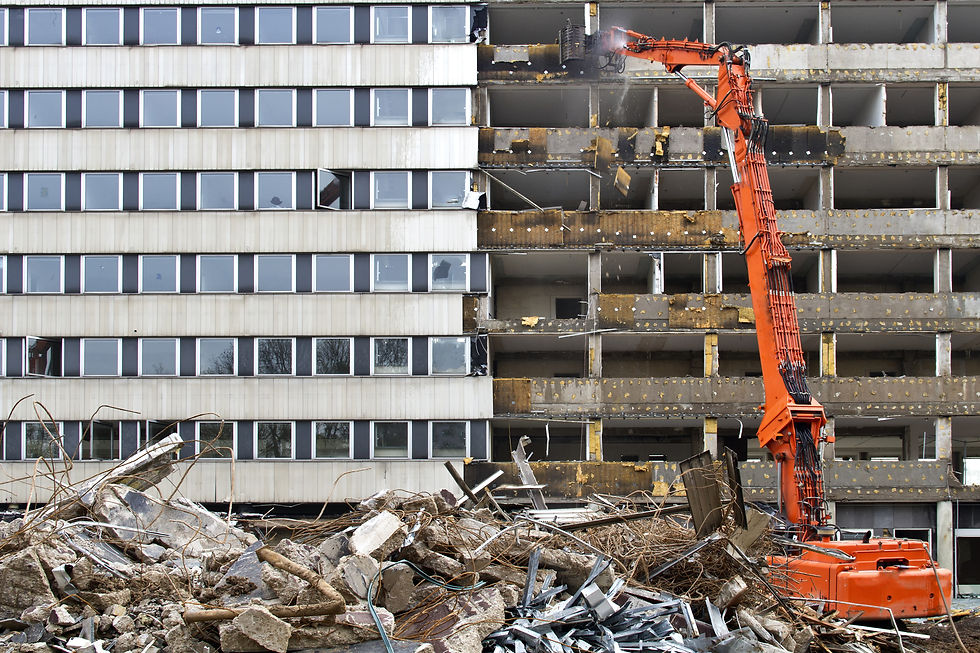Building a Safer Workplace: Overcoming Challenges in Safety Management
- Dec 11, 2023
- 3 min read
Updated: Jan 26, 2024

Creating a safe and healthy work environment is a top priority for any organisation. A well-designed safety and health management system lays the foundation for accident prevention and ensures the wellbeing of employees. However, even with the best intentions and systems in place, accidents can still occur. In this blog post, we'll explore common reasons behind workplace accidents despite robust safety protocols and discuss practical steps to enhance your safety performance.
Human Error: The Unavoidable Factor Accidents often stem from human error, an inherent challenge in any workplace. Employees may make mistakes, experience lapses in judgement, or face fatigue. To address this, continuous training programs that focus on error reduction and awareness can help minimise the impact of human error.
Complacency: Reinforcing the Safety Mindset Over time, employees may become complacent about safety measures, especially if accidents have not occurred recently. Regularly reinforce the importance of safety through ongoing training, reminders, and frequent safety meetings to keep safety at the forefront of everyone's minds.
Change in Operations: Adapting to New Risks Changes in equipment, processes, or the work environment introduce new risks. Conduct thorough risk assessments and update safety protocols whenever there are changes in operations to ensure that the safety system adapts to evolving circumstances.
Inadequate Training: Empowering Employees with Knowledge Employees may not fully understand safety procedures or may lack proper training for specific situations. Regular training programs and access to educational resources are essential to empower employees with the knowledge and skills needed to navigate potential hazards.
Lack of Reporting: Fostering Open Communication Fear of retribution or other concerns may lead employees to hesitate in reporting near misses or safety issues. Create a culture of open communication and non-punitive reporting to encourage employees to share safety concerns without fear of repercussions.
Management Commitment: Leading by Example If leadership doesn't demonstrate a strong commitment to safety, it can affect the entire organisation. Ensure that senior management is actively involved in safety initiatives, leading by example and emphasising the importance of safety as a top priority.
Inadequate Resources: Investing in Safety A lack of resources, such as budget constraints or insufficient staffing, can hinder safety efforts. Allocate adequate resources to support safety initiatives, ensuring that there are ample tools, personnel, and financial backing to maintain a strong safety program.
Failure to Learn from Incidents: Turning Setbacks into Opportunities Accidents should be viewed as learning opportunities. Thoroughly investigate incidents to understand root causes, implement corrective actions, and share lessons learned throughout the organisation. This continuous improvement approach is crucial for preventing similar incidents in the future.
Ineffective Safety Culture: Nurturing a Safety Mindset A strong safety culture is the bedrock of accident prevention. Ensure that employees at all levels buy into the safety mindset, actively participating in safety initiatives and creating an environment where safety is everyone's responsibility.
External Factors: Planning for the Unpredictable Some accidents may be beyond your control, such as natural disasters or incidents involving external parties. While these cannot be entirely prevented, having contingency plans in place can minimise their impact and ensure a more resilient response.
Achieving a perfect safety record is a challenging goal, but a continuous commitment to safety, proactive risk management, and a strong safety culture can significantly reduce accidents and improve overall safety performance. By addressing the factors outlined in this post and fostering a culture of safety, organisations can create a workplace where employees thrive in a secure and healthy environment.

Comentarios